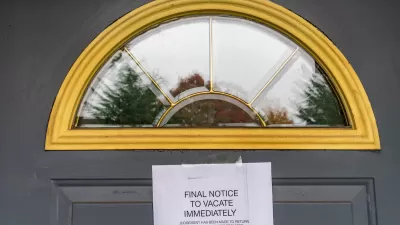The 2015 federal budget proposes a $50 minimum rent on subsidized rural rental housing to encourage “financial responsibility.” Will this really help the rural poor?
Tenants living in USDA Rural Development (RD) financed Sections 514, 515, and 516 would have to pay a minimum rent under the new budget provisions. According to RD, this will help tenants be more financially responsible and move onto the “path to homeownership.”
However, points out Gideon Anders: “This change will impact the most destitute tenants who have the least capacity to pay minimum rent. They are vulnerable households who temporarily or permanently do not receive Social Security, Disability, or other assistance and have no regular full time employment. They are simply unable to pay minimum rent.”
“Elderly and disabled persons with less than $2,000 in annual income are more likely to become homeless from the imposition of minimum rents than to become successful homeowners,” Anders argues.
RD says that these tenants will be able to claim hardship exemptions. Yet in similar HUD programs, an extremely small percentage of households were able to use such exemptions.
“RD estimates that if fully implemented, the imposition of minimum rents will ultimately generate $20 million in revenue,” Anders continues. “Given the fact that the Rental Assistance program alone costs the federal government over $1.1 billion, the savings is paltry.”
FULL STORY: No, Minimum Rents Do Not Encourage Financial Responsibility

Planetizen Federal Action Tracker
A weekly monitor of how Trump’s orders and actions are impacting planners and planning in America.

Restaurant Patios Were a Pandemic Win — Why Were They so Hard to Keep?
Social distancing requirements and changes in travel patterns prompted cities to pilot new uses for street and sidewalk space. Then it got complicated.

Maui's Vacation Rental Debate Turns Ugly
Verbal attacks, misinformation campaigns and fistfights plague a high-stakes debate to convert thousands of vacation rentals into long-term housing.

In California Battle of Housing vs. Environment, Housing Just Won
A new state law significantly limits the power of CEQA, an environmental review law that served as a powerful tool for blocking new development.

Boulder Eliminates Parking Minimums Citywide
Officials estimate the cost of building a single underground parking space at up to $100,000.

Orange County, Florida Adopts Largest US “Sprawl Repair” Code
The ‘Orange Code’ seeks to rectify decades of sprawl-inducing, car-oriented development.
Urban Design for Planners 1: Software Tools
This six-course series explores essential urban design concepts using open source software and equips planners with the tools they need to participate fully in the urban design process.
Planning for Universal Design
Learn the tools for implementing Universal Design in planning regulations.
Heyer Gruel & Associates PA
JM Goldson LLC
Custer County Colorado
City of Camden Redevelopment Agency
City of Astoria
Transportation Research & Education Center (TREC) at Portland State University
Camden Redevelopment Agency
City of Claremont
Municipality of Princeton (NJ)





























